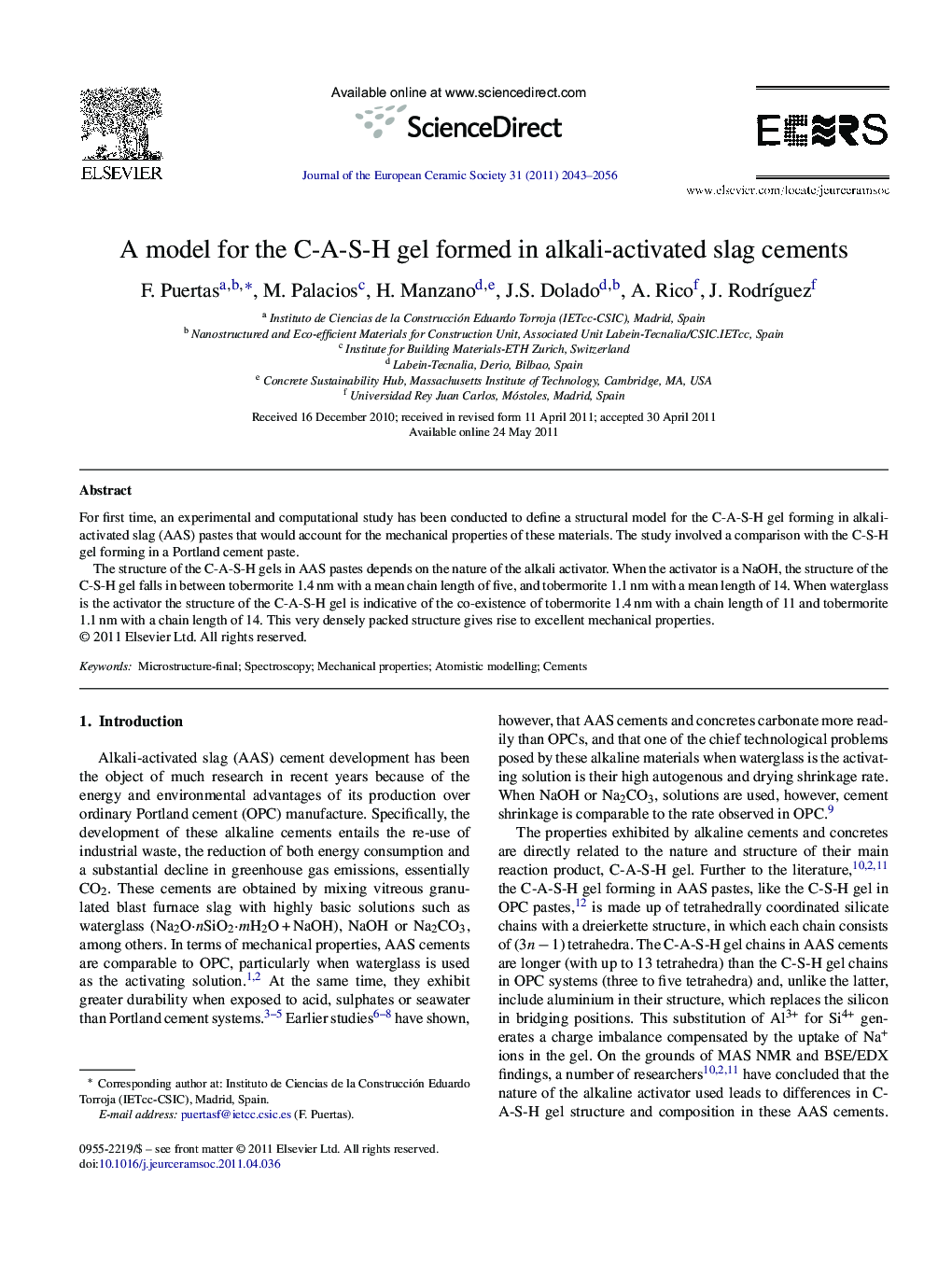| Article ID | Journal | Published Year | Pages | File Type |
|---|---|---|---|---|
| 1474359 | Journal of the European Ceramic Society | 2011 | 14 Pages |
For first time, an experimental and computational study has been conducted to define a structural model for the C-A-S-H gel forming in alkali-activated slag (AAS) pastes that would account for the mechanical properties of these materials. The study involved a comparison with the C-S-H gel forming in a Portland cement paste.The structure of the C-A-S-H gels in AAS pastes depends on the nature of the alkali activator. When the activator is a NaOH, the structure of the C-S-H gel falls in between tobermorite 1.4 nm with a mean chain length of five, and tobermorite 1.1 nm with a mean length of 14. When waterglass is the activator the structure of the C-A-S-H gel is indicative of the co-existence of tobermorite 1.4 nm with a chain length of 11 and tobermorite 1.1 nm with a chain length of 14. This very densely packed structure gives rise to excellent mechanical properties.
